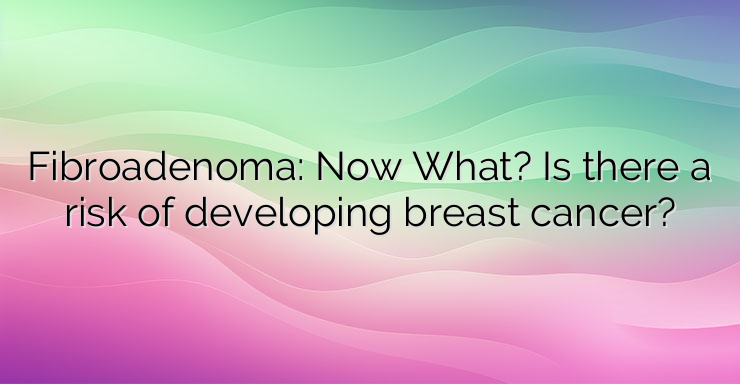Fibroadenomas are firm, noncancerous breast lumps that occur most often in women between the ages of 15 and 35. The formations may feel firm, smooth, and well separated from the surrounding tissue. Usually not painful, they can feel like a “ball” in the breast that is easily mobile when examined. Fibroadenomas vary in size and may spontaneously increase in size or shrink. They are among the most common non-cancerous (benign) breast growths in young women. Treatment may include observation to detect changes in size or sensation, a biopsy to evaluate the tissue, or surgery to remove it. Fibroadenomas usually have a round distinct and smooth border, are easily mobile and can be firm on palpation, are not painful. You may have one or more lumps in one or both breasts. The causes of fibroadenomas are unknown, but there is a theory that they may be related to reproductive hormones. Evidence of this is that fibroadenomas appear more often in reproductive age. They can increase in size during pregnancy or when using hormone therapy. And accordingly, they can “shrink” after the onset of menopause, when hormone levels decrease. It is believed that they probably appear due to increased sensitivity to the hormone estrogen. The breast consists of lobules (glands that produce milk) and ducts (tubes through which milk moves to the nipple). They are surrounded by glandular, fibrous and fatty tissue. Fibroadenomas develop from the lobule. Glandular tissue and ducts grow over the lobule and form a hard lump. What types of fibroadenomas are there? Simple fibroadenoma Most fibroadenomas are about 1-3 cm in size and are called simple fibroadenomas. When viewed under a microscope, the tissue usually looks the same everywhere. Simple fibroadenomas do not increase the risk of developing breast cancer in the future. Complex fibroadenoma Some fibroadenomas are called complex or complex. When viewed under a microscope, some of the cells have different characteristics. Giant fibroadenoma These can grow to more than 5 cm in diameter. In most cases, they may need to be removed because they can press on or replace other breast tissue. Juvenile fibroadenoma This is the most common type of breast lump found in girls between the ages of 10 and 18. These fibroadenomas can become large, but most shrink over time and some disappear. Phylloid tumor Although usually benign, some phylloid tumors can become cancerous (malignant). Doctors usually recommend that they be removed. Most fibroadenomas do not affect the risk of breast cancer. However, the risk may be slightly increased in the presence of complex fibroadenoma or phyllodes tumor. This does not necessarily mean that it will develop into cancer. It is important to continue to have regular check-ups and see your GP,if you notice any change in your breasts, no matter how soon after you were diagnosed. In many cases, fibroadenomas do not require treatment. However, some women choose to have them surgically removed for personal peace of mind. A doctor may recommend surgery to remove it if any of the tests performed — a clinical breast exam, imaging test, or biopsy — are abnormal, or if the fibroadenoma is extremely large and causing symptoms.


Leave a Reply